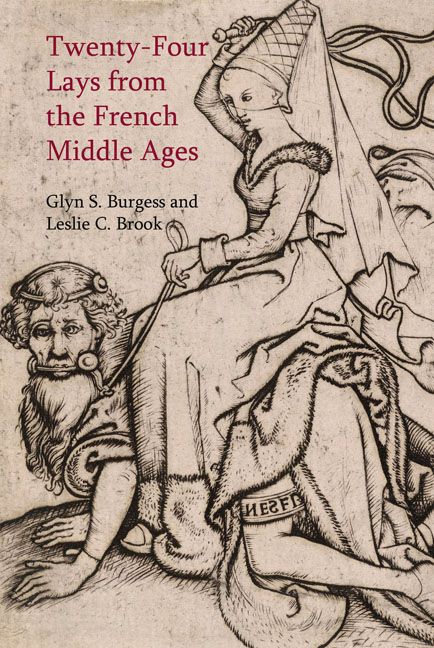General Introduction
Summary
The genre of the narrative lay (or lai) in Old French is predominantly associated with an author traditionally known as Marie de France. Her twelve surviving lays, known collectively as the Lais, have often been regarded as the model of the genre, and Marie herself as its creator. Often known as the Breton lay – because of its perceived links with Brittany in terms of origin and the presence, in some cases but not all, of Breton locations and personages – the narrative lay is to the modern short story what the genre of the romance is to the modern novel.
It would be wrong, however, to think that the lay as a genre is restricted to Marie's twelve poems. No definitive list has been established, and the boundaries between genres are never clear-cut, but in the present volume we provide translations of twenty-four further poems that possess all, or at least many, of the characteristics that define the lay. Some of them (e.g. Espine and Guingamor) have over the years been attributed to Marie de France, some (e.g. Espervier and Ignaure) have features that are associated with the comic tales known as the fabliaux, and the Chastelaine de Vergi, despite its marked similarities in form and content to the lay, has, especially in more recent times, been regarded as a short romance. Taken as a whole, these lays are often referred to as ‘the anonymous lays’ but the expression is inappropriate, even if it does help to differentiate them from the lays of Marie de France, as five of these twenty-four works provide us with the name of their author: Amours (Girart), Aristote (Henri), Cor (Robert Biket), Ignaure (Renaut) and Ombre (Jehan Renart). But the fact that far more of our lays do not name their authors is in no way surprising, as many writers at the time regarded it as their task to pass on to their public stories composed by others rather than to emphasise or flaunt their own individuality.
Just as it is impossible to date the Lais of Marie de France with any degree of precision (the 1160s are often mentioned, but the work could have been completed a couple of decades later), so it is with the dating of the lays in this volume.
- Type
- Chapter
- Information
- Twenty-Four Lays from the French Middle Ages , pp. 1 - 9Publisher: Liverpool University PressPrint publication year: 2016



